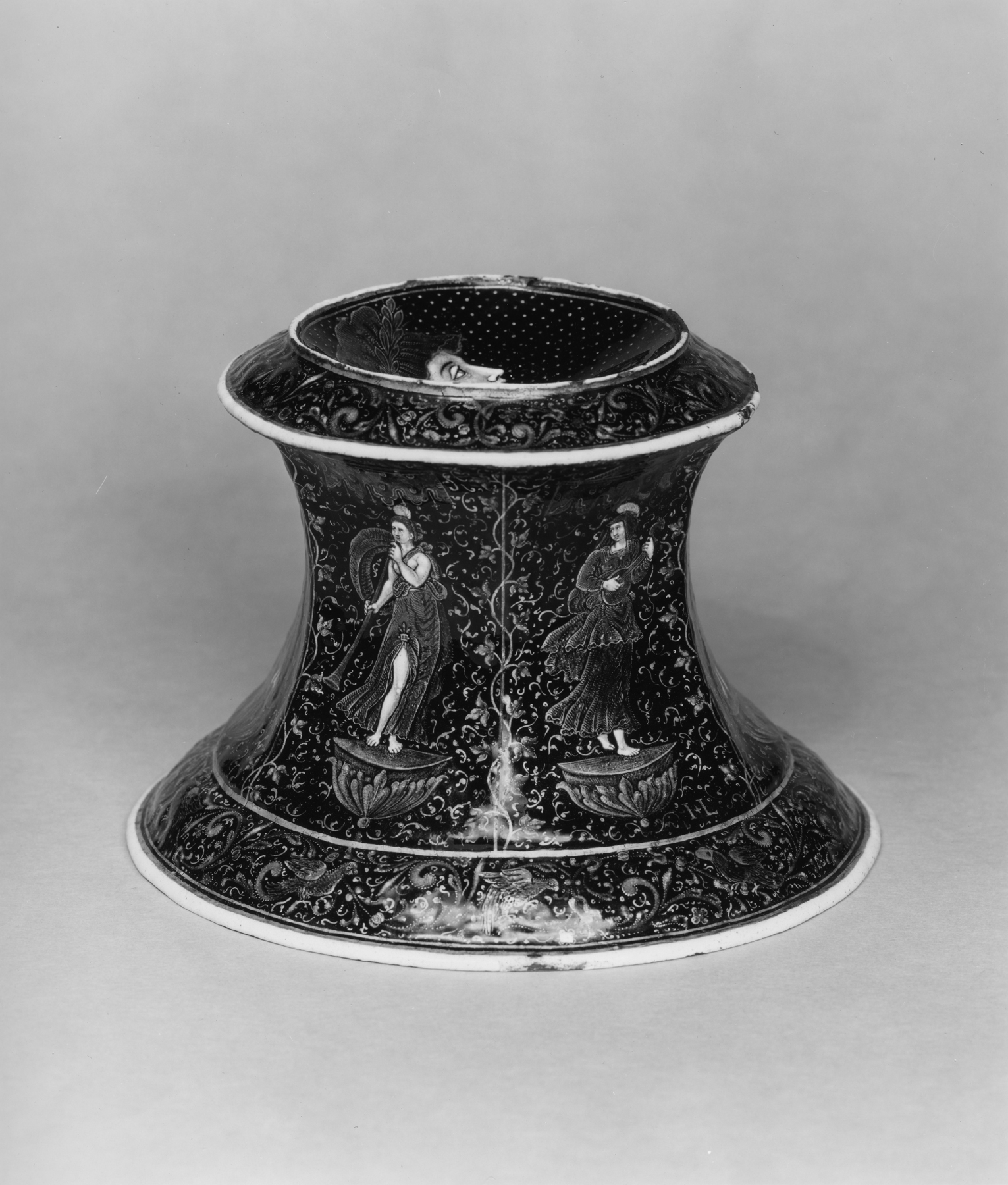Salt Cellar: The Muses
(Renaissance Europe )
The concave hexagonal body flares into a molded circular base. In the receptacle (saleron) is delineated a female bust, in profile to the right, against a black background powdered with gilt dots. She wears a costume with square neckline, showing the frill of the underdress, and a blue bonnet encircled with a wreath of laurel. The molded rim is decorated with scrolls. Each of the six concave panels on the sides displays a full-length figure of a Muse playing a musical instrument. One is following the notes on a score with her left forefinger. The figures stand on basin-shaped podia, supported by brackets of foliage, and beneath canopies with lambrequins. Vines twisted around gilt rods separate the panels. The convex base is decorated with foliate scrolls animated by parrots. The underside is enameled in black powdered with fleurs-de-lys, quatrefoils and dots of gold. On the panel representing the Muse playing the guitar is lettered in gold the signature I L, with a fleur-de-lys painted faintly between the two initials.
The shape of the salt cellar, a "piédouche" with hexagonal body, appeared in metalwork towards the end of the 16th century. Such enameled salt cellars were executed in pairs.
Provenance
Provenance (from the French provenir, 'to come from/forth') is the chronology of the ownership, custody, or location of a historical object. Learn more about provenance at the Walters.
William Cosier [date and mode of acquisition unknown]; Sale, Christie's, London, April 5, 1894, no. 106; Charles Borradaile, Brighton, [date of acquisition unknown] by purchase; George Robinson Harding, London, [date of acquisition unknown] by purchase; Henry Walters, Baltimore, [date of acquisition unknown] by purchase; Walters Art Museum, 1931, by bequest.
Exhibitions
| 1897 | Burlington Fine Arts Club, 1897. Burlington Fine Arts Club, London. |
Geographies
France, Limoges (Place of Origin)
Measurements
H: 3 15/16 x W: 5 1/2 in. (10 x 14 cm)
Credit Line
Acquired by Henry Walters
Location in Museum
Not on view
Accession Number
In libraries, galleries, museums, and archives, an accession number is a unique identifier assigned to each object in the collection.
In libraries, galleries, museums, and archives, an accession number is a unique identifier assigned to each object in the collection.
44.360


